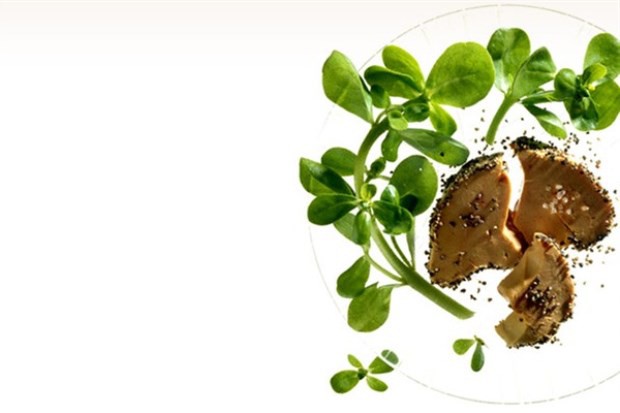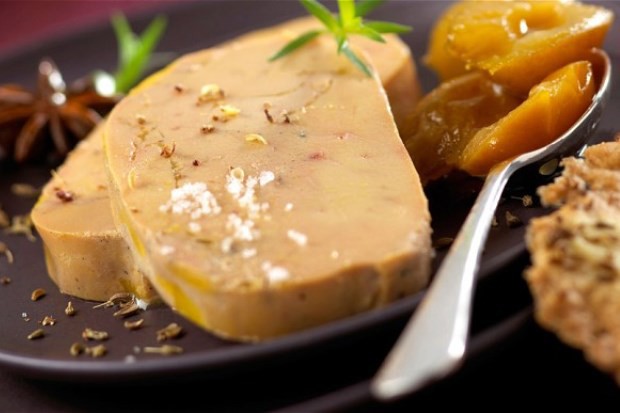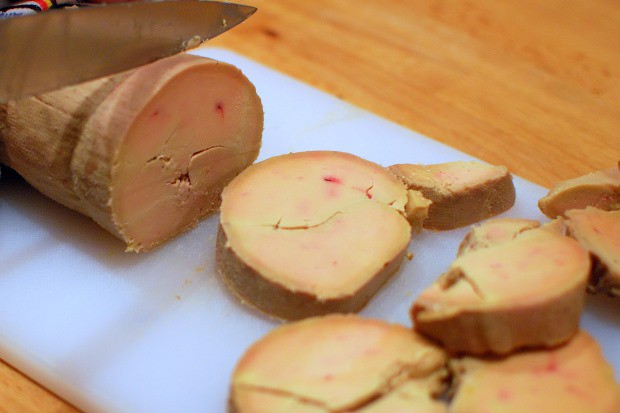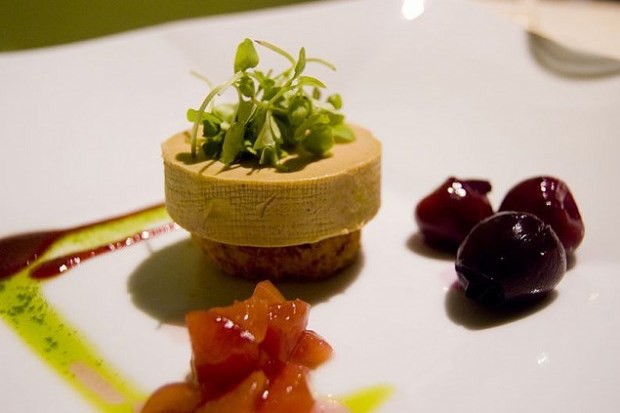[fwah grah ; Fr fwah grah] the liver of specially formed geese or ducks, used as a table delicacy, especially in the form of a paste (pate de foie gras)
ORIGINS
Some 5,000 years ago, the Egyptians discovered that ducks and geese ate large amounts of food to prepare for their year-end migratory flight. As a result, their livers not only swelled to a much larger size but also became much tastier upon cooking.
The practice of force-feeding ducks or geese is believed to have originated when the Egyptians first fed their geese with figs. Since then, this delicacy has been enjoyed by the Greeks, the Romans and the Jews.
However, it was the French who improved on the feeding technique called gavage, and who developed novel preparation methods such astorchon and mousse. Many of these are still in wide use today.
WHAT IS FOLE GRAS?
Foie gras refers to the fattened liver of a duck (foie gras de canard) or a goose (foie gras d’oie). The extremely high fat content gives it an incredibly rich flavor and silken texture that melts in the mouth. Surprisingly, the fat contained in foie gras is actually unsaturated fat, which has coronary benefits.
Foie gras is available in many variations:
– foie gras entier: Whole liver lobes, cooked and cured, ready for the chef’s preparation. Contains no extra additives or mixes. This is definitely the premium product.
– bloc de foie gras: Small pieces of foie gras molded into a fully cooked block. Traditionally includes the addition of truffles. Under French law, anything called “bloc de foie gras” should comprise 98% or more foie gras. If termed “avec morceaux” (with pieces), it must contain at least 50% foie gras pieces from goose, and 30% from duck.
– foie gras broyé: Pieces of duck and goose liver ground into a mixture. The proportion is around 35% duck and 50% goose liver.
– mousse de foie gras: Pieces of foie gras puréed smooth and whipped into a mousse-like consistency. Legally required to contain no less than 50% of foie gras.
– parfait de foie gras: Puréed duck or goose liver. Extremely similar to mousse, but legally required to contain no less than 75% foie gras.
– paté de foie gras: Foie gras puréed with other meat products, such as pork or veal, into a spread-like consistency. Legally required to comprise 50% or more foie gras.
SOURCES OF FOLE GRAS
Foie gras is available throughout the year, though winter is the peak season for goose production. It is produced through a prolonged process of manual feeding known as gavage, and only selected birds such as Toulouse or Strasbourg geese and male Mulard ducks are used. They are fed a grain mash comprising corn, fat and vitamin supplements.
France is the world’s leading producer, as well as its greatest consumer. Foie gras from the Alsace, Périgord and Gascony regions is particularly sought after for its extremely delicate taste. Other countries that produce this delicacy include Hungary, Bulgaria, Canada, Israel and Madagascar.
FOLE GRAS DISHES
Foie gras d’oie is more expensive than foie gras de canard due to the higher cost of farming geese. The more delicate taste of foie gras d’oie lends itself better to traditional French preparations that generally involve low heat, such as the terrine style.
Foie gras de canard however, is more flavorful and retains its characteristic taste and texture even after undergoing hot preparations such as pan-searing (poëllé) and grilling. Despite its comparatively lower cost, it should not be regarded as a lesser cousin, as there are many who prefer its richer taste.
Foie gras is often served at the beginning of a meal, when one’s taste buds are most receptive. To best bring out the rich flavors of the dish, foie gras is commonly paired with bread – specifically brioche.
Chefs are also fond of complementing the richness of foie gras with ingredients such as figs, raisins and fruit conserve. These sweet, fruity pairings usually bear a tinge of acidity, which cuts through the fattiness of the foie gras.




